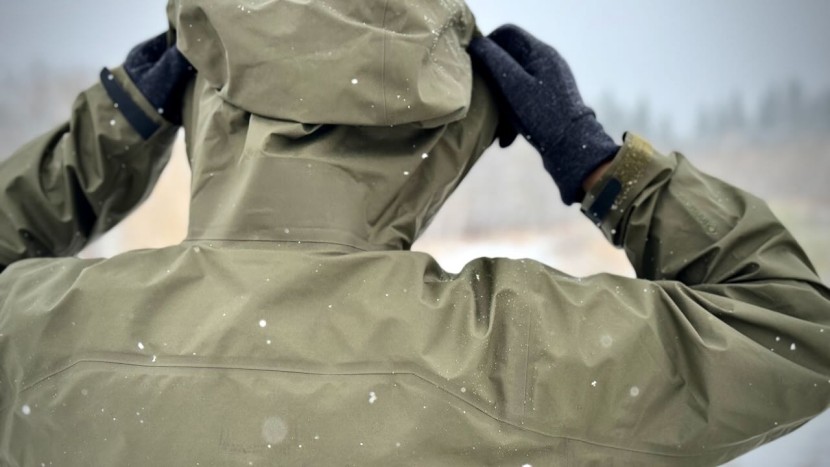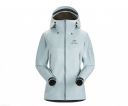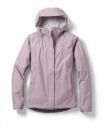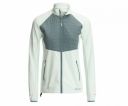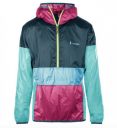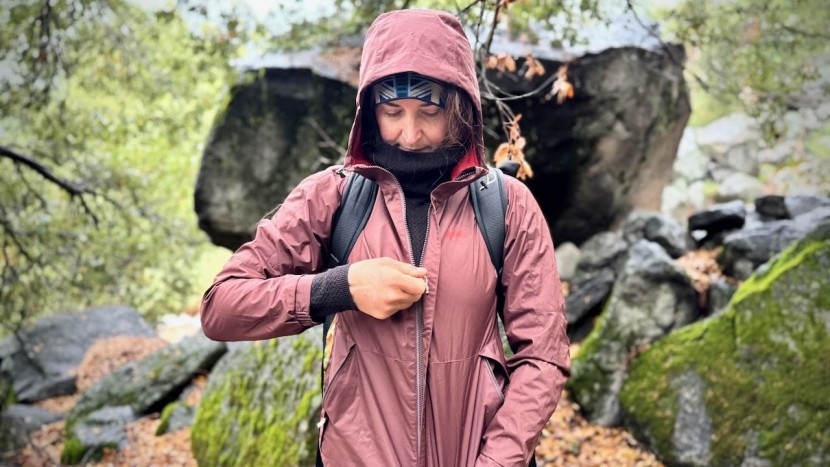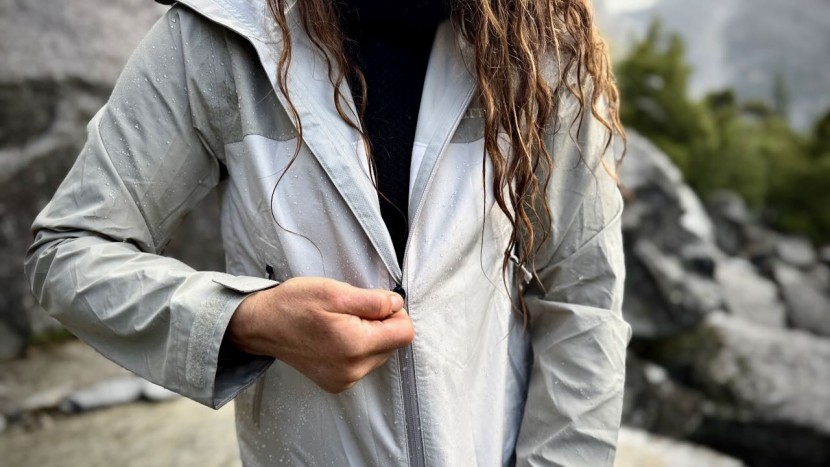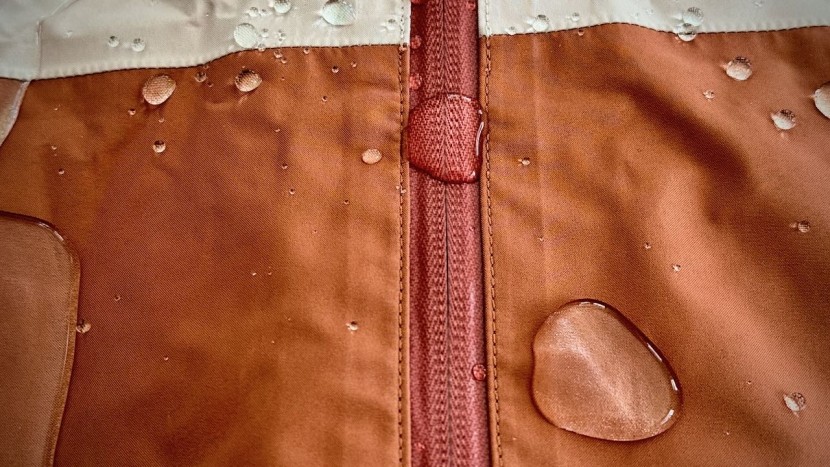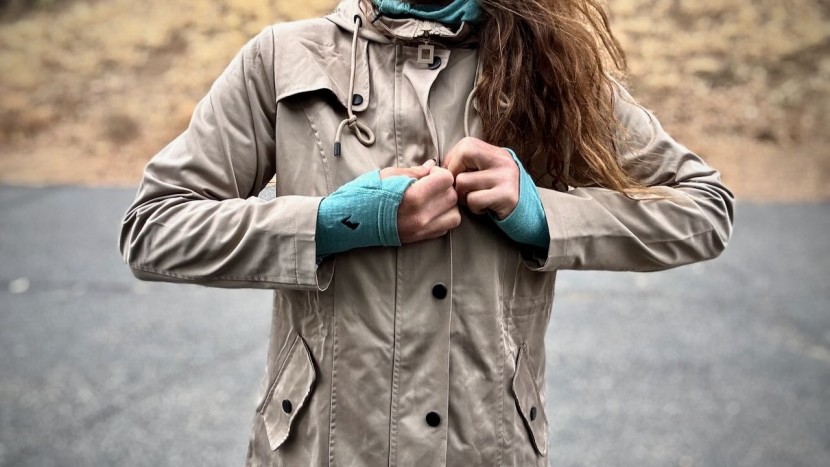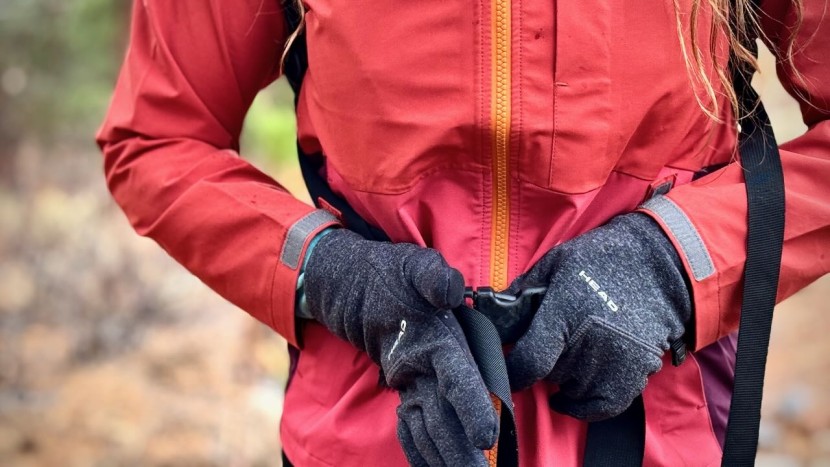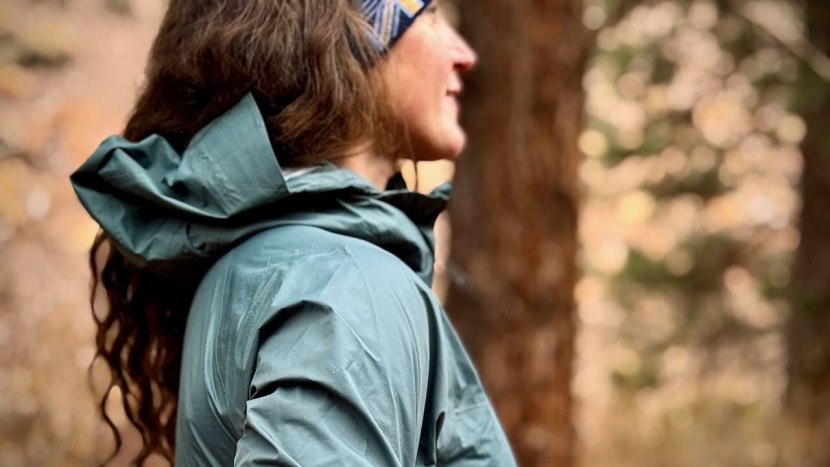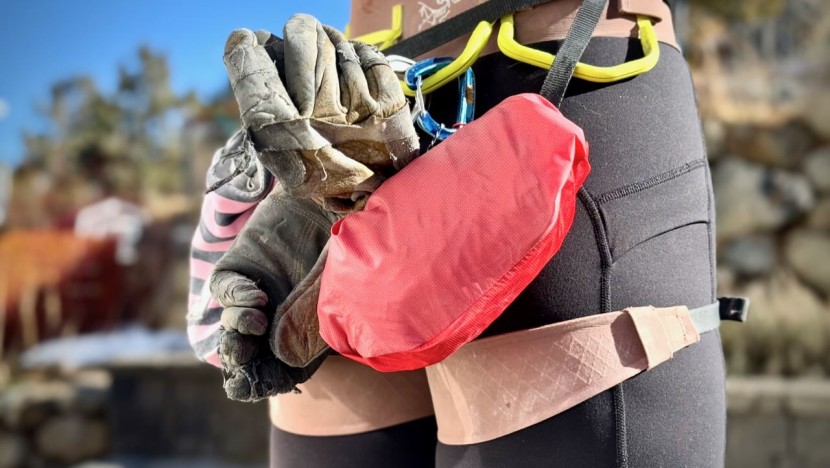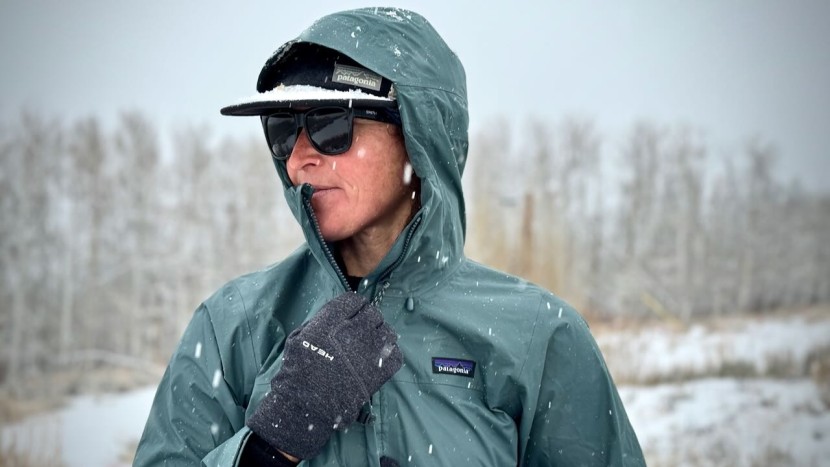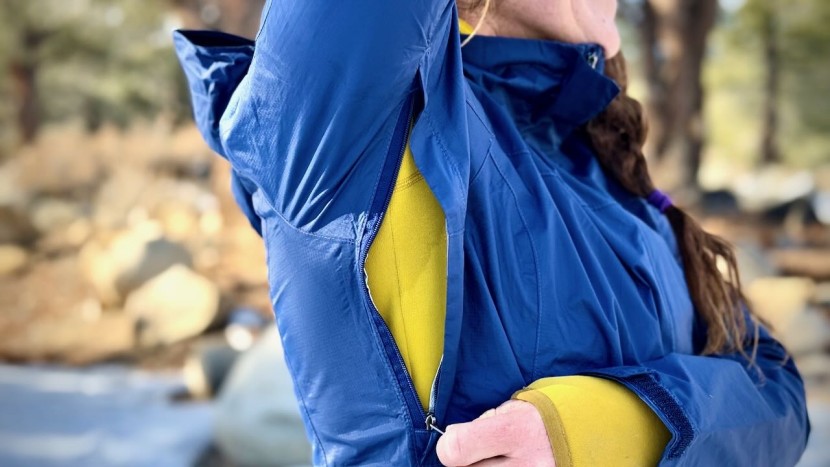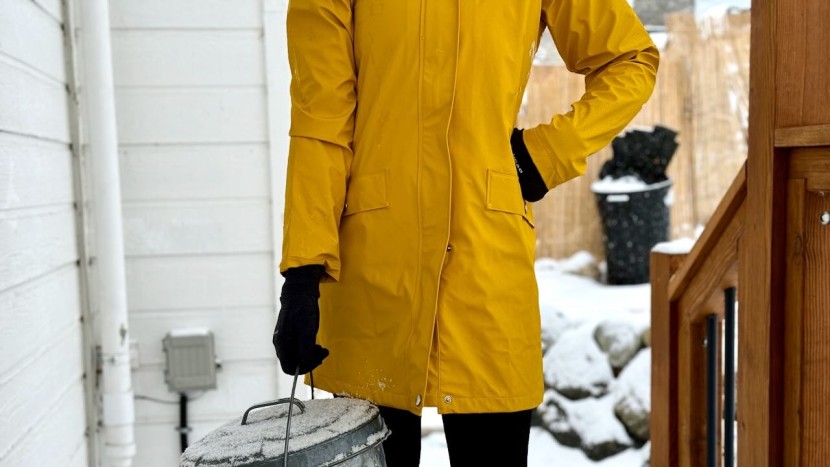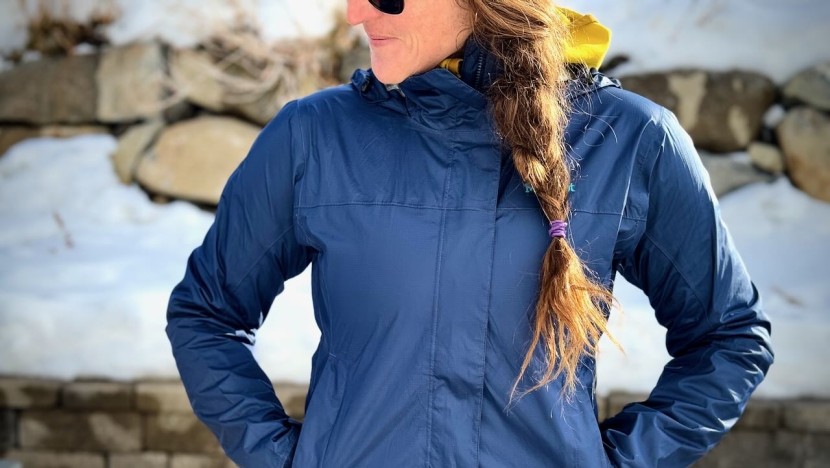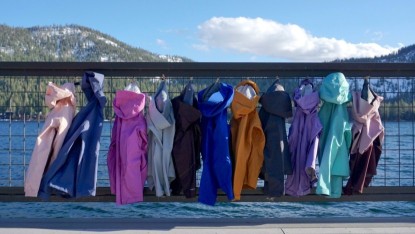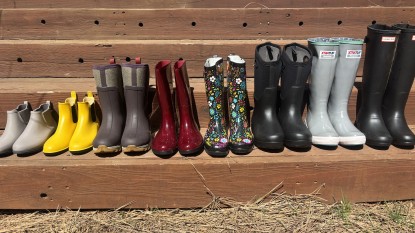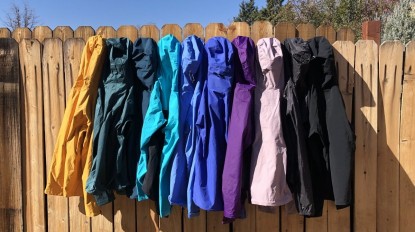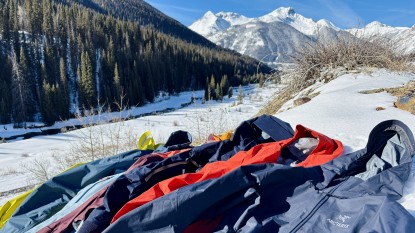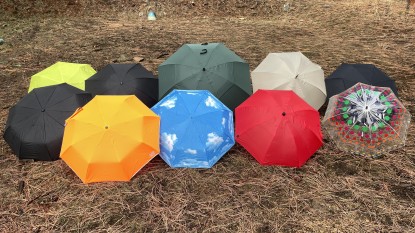The rainwear industry has come a long way, changing every bit of technology that goes into making a great raincoat right down to the fabric. With the blessing of choice comes the curse of making a decision. Where once it was easy to grab the only option out there, now we must wade through a sea of the latest innovations and proprietary technologies that are impossible to compare just by reading about them, all in an attempt to figure out if that impressive, snazzy jacket is worth the dough.
You can easily spend upwards of $300 on a jacket that fits in the palm of your hand and will keep you dry all day, but that doesn't necessarily mean it the best choice for you and your rainy outdoor pursuits. But before you give up and buy the cheapest option out there, let us help. We start by figuring out what sort of jacket you need for your adventures, whether that be strolling around the city or heading out on a climbing pursuit.
Types of WaterPROOF Jackets
There are two main types of waterproof jackets or shells: a hardshell and a rain shell. Both types serve roughly the same purpose, but there are some key differences: price and durability.
The Hardshell
The Rain Jacket
Types of Water RESISTANT Jackets
Perhaps this is all too much. After all, a waterproof layer will always involve some level of breathability sacrifice. If you live in a dry climate and don't often find yourself in much more than a light shower here and there, a waterproof layer may be overkill. Some other options still do a pretty good job of protecting you against a small amount of precipitation but are more comfortable and much more breathable than most waterproof layers.
The Softshell
The Windbreaker
So You Want a Rain Jacket
Great! Now that you know you're in the right place, there's still a sea of choices to swim through. At their core, rain jackets aim to be waterproof and breathable. After all, if your waterproof jacket isn't breathable, you may as well be wearing a plastic poncho. To achieve water resistance AND breathability, manufacturers use different numbers and types of layers pressed together to create what looks like a single shell layer. You'll often see this listed in the specifications of any jacket. But what does it mean, and which is better?
2-Layer Shells
The 2-layer shell is the simplest raincoat construction. It's the most basic rain jacket version, with increasing layers built onto these original two. So, what are the two layers? Though they appear as a single layer, the outer facing layer of the fabric is treated to repel water, most often with Durable Water Repellent treatment, or DWR. This treatment helps water to bead up and roll off the jacket without soaking in.
DWR, or Durable Water Repellent, is a treatment applied to regular fabric, like nylon or polyester, to help repel water. It's found in a LOT of different outdoor gear, including rain jackets. However, even the best DWR treatment will wear off over time and needs to be reapplied regularly. It wears off more quickly with abrasion, like that from a harness or waist belt - or being crammed into the bottom of your bag. DWR can be easily reapplied with something like Nikwax Tech Wash. For more information on caring for DWR-treated fabric, check out this article from REI.
The second layer is a waterproof inner membrane. Manufacturers may use different types of waterproof membranes to achieve this. One of the most famous is Gore-Tex. Gore-Tex is made from expanded polytetrafluoroethylene fibers, aka Teflon. It functions as both a waterproof and breathable layer because of its incredibly tight weave of tough fabric that is resistant to breakage. The microscopic pores of Gore-Tex are thousands of times smaller than a water droplet while simultaneously hundreds of times larger than a molecule of moisture vapor. This allows it to repel the large drops of rain while allowing the microscopic steam from your body to escape.
However, Gore-Tex isn't the only possible waterproof membrane a jacket may be lined with. Manufacturers use many different possible waterproof layers that function similarly but have their trade-offs of breathability and durability. Gore-Tex is also more expensive, so jackets that have it tend to reflect that price difference.
With just two layers, the internal layer meant to maintain breathability will likely rub against your body. Oils and dirt from your skin can easily clog the pores of your jacket, making it less breathable over time. There are three main strategies used to combat this. The first two are often seen in less expensive jackets that tend to have less breathable inner membranes to begin with. Some of these jackets simply end there, and after wearing these jackets a certain number of times, they often stop being breathable and may even begin to peel apart.
Other 2-layer jackets made of inexpensive materials will try to add a little durability by simply adding a loose mesh layer inside the outer (2-layer) shell to rest between your skin and the jacket itself, providing a barrier between your skin and that inner membrane. This adds weight to the jacket but also tends to be less expensive. This style of 2-layer jacket is among the least expensive — and least durable — options.
The other strategy is to make the inner layer of more durable membrane material (typically Gore-Tex) and simply clean it more often. Regular laundering helps keep the breathable pores free of oil and dirt but will wear out a less durable inner membrane. It also wears out the outer DWR treatment faster, requiring you to reapply more frequently. This construction strategy is used to make exceptionally lightweight, protective shells, but it requires more regular cleaning and care. This style of 2-layer jacket is best for lightweight missions that still require tough protection, as long as you're willing to keep up with their maintenance.
2.5-Layer Shells
How does one make half a layer? If this sounds confusing, you're not alone. Essentially, the added half-layer is a lightly sprayed or painted-on protective coating over the inner membrane. Because it's an applied laminate or coating rather than an actual layer of fabric, it's considered a “half layer,” hence the 2.5-layer denomination. This strategy is typically used over more budget-friendly materials like polyurethane, which is less durable than thicker materials like Gore-Tex.
It can also shave off ounces from the jacket's overall weight. This is because more durable material (like Gore-Tex) that can be used without the added half-layer is also thicker and heavier. By using a protectant, the other two layers of the jacket can be made of lighter, thinner, less durable materials. Due to this clever construction, some of the lightest rain jackets available are 2.5 layers. They also tend to be a bit less expensive than many other two- or three-layer jackets but are often less durable. 2.5-layer jackets are best for saving weight and money but aren't as rugged or durable.
3-Layer Shells
These are typically the most robust jackets out there and the most likely to last longer. The simplest way to think of a 3-layer rain jacket is that it's a two-layer jacket with an extra liner layer fused inside. Of course, they don't look like that, but some have textured interiors. The third layer helps stop oils and dirt from your skin from coming into contact with the breathable membrane of the jacket, meaning that less laundering is required to keep it breathable. This comes with a trade-off, though, as an additional layer does lower the overall breathability of the jacket, making this construction better in colder environments. Three-layer jackets also offer some of the most protection of any rain jacket. On the other hand, triple layers also typically mean a thicker, more stiff jacket. Three-layer jackets are best for consistent protection and performance in the harshest conditions.
How to Choose the Right Jacket
Now that you understand the products and technologies available, the next step is determining which product best matches your needs. As a consumer, to be sure you select the right jacket for you and avoid wasting time and money, it is important to be honest with yourself about your specific rainwear needs/wants/desires/wishes. Then, you should review the scoring metrics in this review and select a jacket that suits your needs and expectations.
Usage
Will you consistently be trudging through stormy weather, or is your rain shell an emergency-only piece that will live in the bottom of your backpack or messenger bag for occasional day hikes? For the avid outdoorswoman, perhaps the most important aspect to consider is how often you will wear the jacket versus how often you will carry it in your backpack. This will likely affect your price range first, after which you will want to consider pack size and durability.
If you're constantly out hiking, biking, and traveling in the rain, you may want to consider a more durable option that will last through the years. If you're looking for an emergencies-only layer that doesn't take up too much space in your pack, you may consider an ultralight option. Perhaps you need a super versatile jacket that looks as good in the park as in the office and doesn't sacrifice comfort for functionality.
Climate
What is your surrounding climate? Is your home range the Sierra Nevada or the forests of the Pacific Northwest? Perhaps it is Appalachia, the Gulf Coast, or the Rocky Mountains. This will determine the importance of durability and waterproof metrics. If it rains a lot in your outdoor pursuits, then you don't want to skimp on the waterproof factor; make sure to look for an option that's great in heavy downpours. But if rain is infrequent and less consequential to your goals, ambition, and happiness, perhaps you will derive more satisfaction from a jacket that performs in a pinch but doesn't feel like a brick in the bottom of your pack. For this, you may consider the weight and packability or even look for an all-around value option since you won't likely need to use it too often.
Activity
How about your level of activity? Do you want a jacket that will keep up with you on speed ascents in the mountains? A thinner jacket will feel better overall for high aerobic output activities if you are moving fast, as it means there is less material through which your body has to pump excess heat. A jacket with great ventilation features may also be your best friend here. Maybe short, leisurely strolls even in the rain fit your style more, or you tend to find yourself braving a cold rain more often than not. In that case, breathability matters less and might even work against your ability to keep yourself warm.
Cycling and bike commuting offer particular challenges to your rain jacket selection. Moving forward at high speeds means the rain will really be pelting you, so waterproofness is important. But it also creates particular challenges for breathability. You don't want vents that open wide to let water in, but you will want a jacket that can dump heat fast on that unexpected hill around the corner. And, if you are actively pursuing your flights of fancy, you need to be able to move freely, making flexibility, fit, and comfort the primary factors in selecting the right rain shell.
Style
Some outdoor adventurers don't care how they look. Functionality is all that matters. But, to others, appearance is a factor, and while all of the jackets rank within a similar range in looks (because functionality factors in first when designing a rainshell), there is some variation. Depending on whether you like bright colors and bold patterns or favor a fitted shape and classic shade, there's a rain jacket for that.
Price
It is hard to justify spending a few hundred dollars on a piece of clothing you might only wear a few times. On the flip side, if you find yourself pursuing your outdoor activities more often than not, you might just be willing to invest in a piece of equipment that will prove trustworthy and loyal through all types of conditions. But if you fall somewhere in between, as most people do, that's where the choosing gets tough. The best approach is to first list your priorities and uses for the jacket.
Next, think of any good or bad experiences you've had with previous rain jackets. Then, reflect a little on these uses and experiences and rate the importance of each component of a rain jacket for you (our scoring metrics provide a handy list you can use). Leave price for last; don't ignore it, just look at it last. In the long run, for a layer that can make or break an outing you've been looking forward to all year, it might be worth the extra cash to invest in a jacket that keeps you dry without causing discomfort or weighing you down.
Don't Let it Die!
No matter what rain jacket you decide is right for you, they all need upkeep to protect you from the wet over time. Unless you plan on wearing a literal plastic bag, every option you choose needs careful care to continue keeping you dry. And for something you could spend hundreds of dollars on, it's important to pay attention to this upkeep regiment. From reapplying a DWR coating in your washing machine, sending it through the drier to reactivate coatings, or periodically retaping seams, each jacket has its specific tips and tricks to keep it working for as long as possible. Whatever coat you decide on, be sure to read the label and follow those directions unless you want to end up with a rain jacket that doesn't keep you dry.
In the end, buying a raincoat is a very personal choice, but this review should help you wade through the flood of information and zero in on the jacket that will keep you dry and motivated, even when good old Mother Nature decides to rain on your parade literally.


